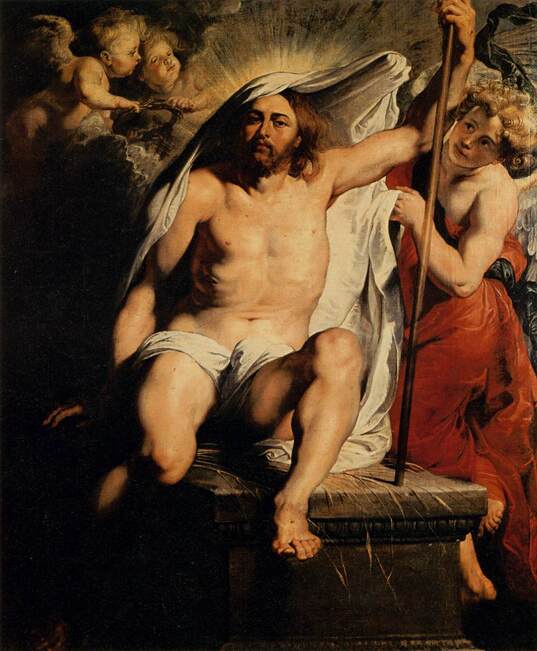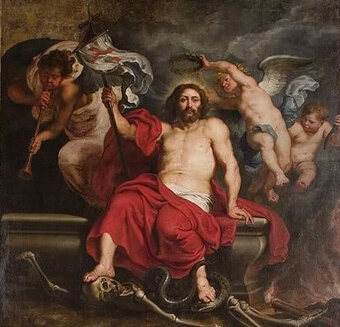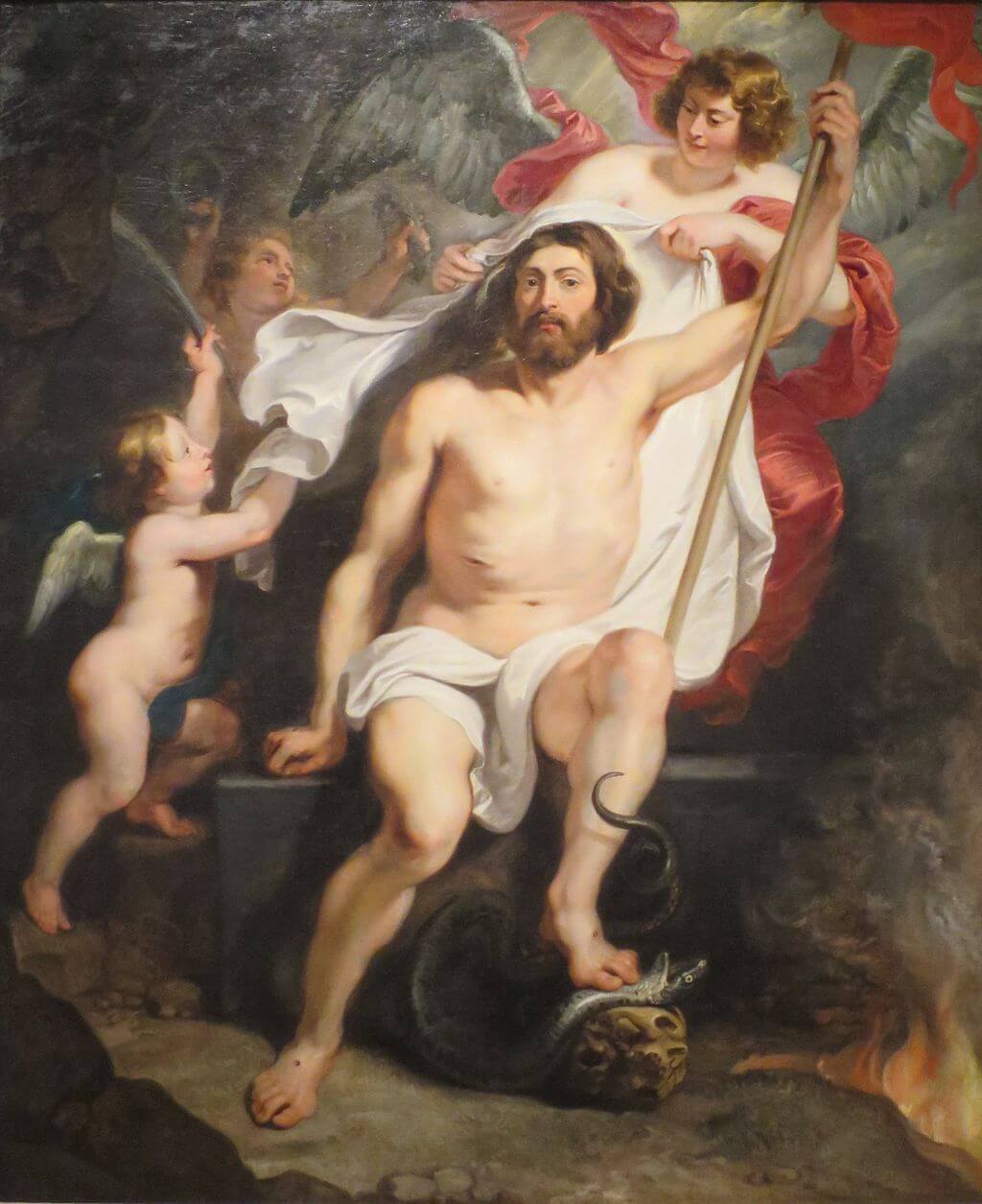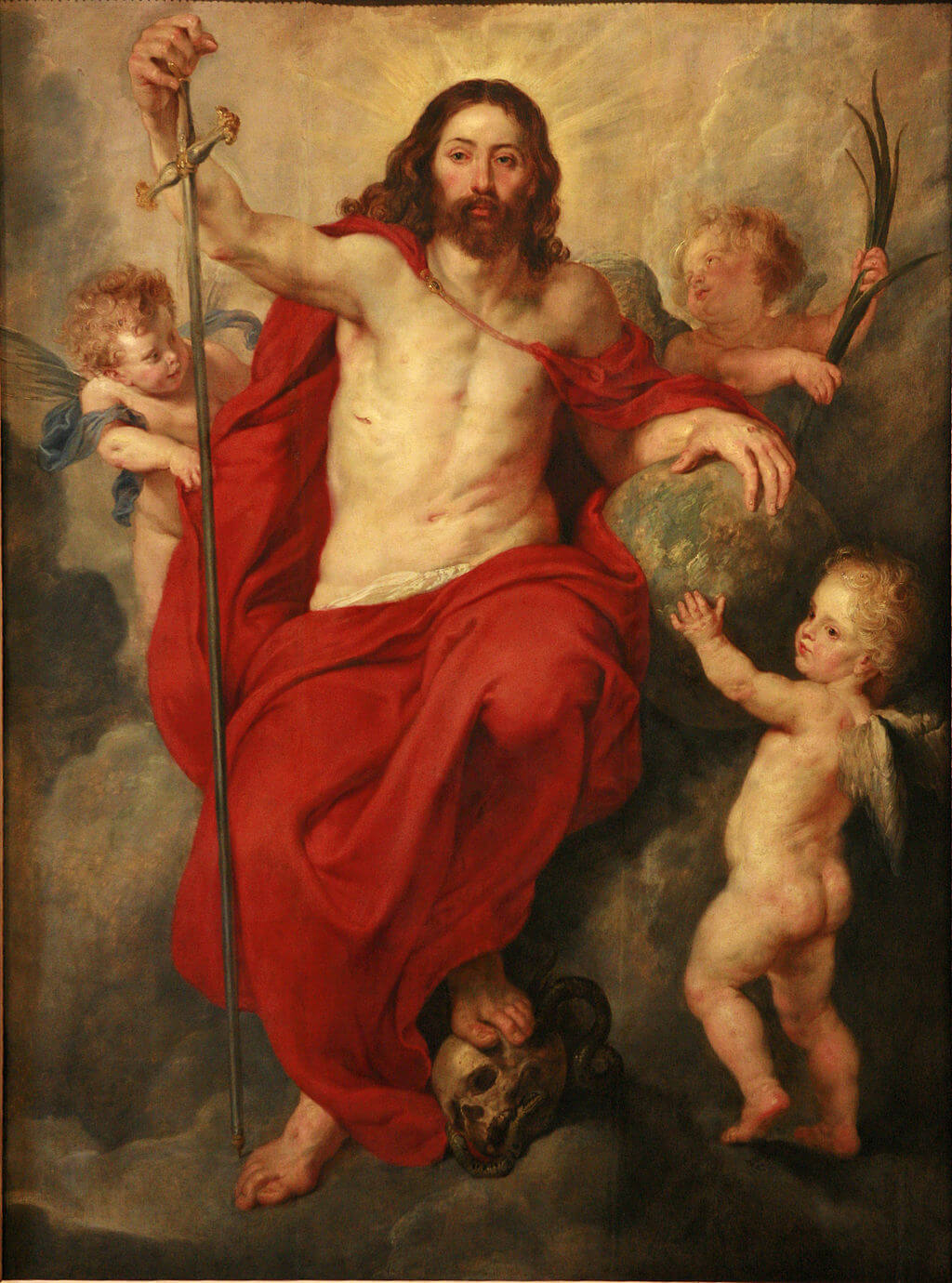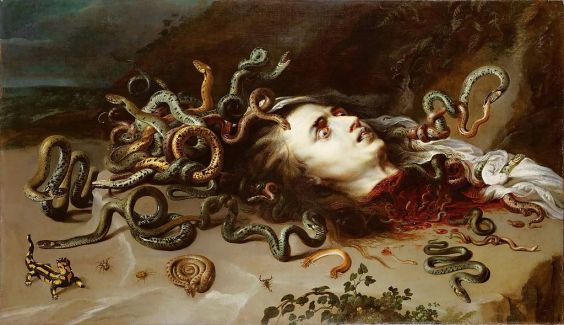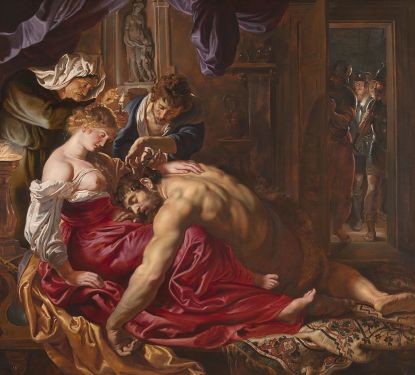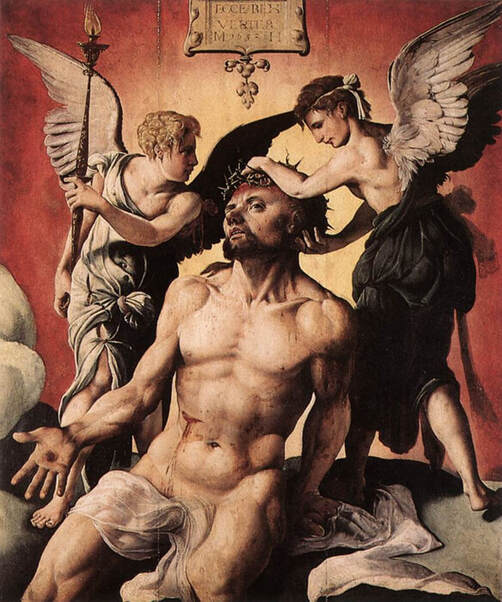|
Where? Palatine Gallery in the Palazzo Pitti
When? 1616 What do you see? Jesus is shown just after he has risen from his grave. On top of his head are bright rays of light shine to indicate his holiness. Light shines brightly on most parts of his body to emphasize that Jesus is alive again. You can still some remains of the wounds that he suffered during the crucifixion (see the middle of his left foot and arm, and the wound, partly in the shadow, on his right side which was pierced by a lance).
On the top left, two small angels are waiting to put the crown of thorns on Jesus (some people say that they took this crown from Jesus, but the head of Jesus is still covered). The large angel on the left, dressed in orange, lifts the cloth in which a dead person is wrapped for burial (also called a shroud). You can imagine that the right hand of this angel is behind the top right of the cloth. On top of the tomb are pieces of wheat that symbolize the bread used in the Holy Communion, which in turn symbolizes the body of Jesus.
Backstory: This painting by Rubens is known under various names, such as ‘The Easter Tomb,’ ‘Christ Resurrected,’ ‘The Resurrection of Christ,’ ‘The Triumph of Christ over Death and Sin,’ and ‘Resurrected Christ Triumphant.’ The reason for some of these alternative names is that Rubens created several other paintings based on this original version. In several of these versions, there is a skull and a snake under the feet of Jesus, which is why some people have also started to refer to the original of Rubens as the triumph over death and sin. One of these later versions is in the Columbus Museum of Art in Columbus, Ohio, another one in the Musée des Beaux-Arts in Strasbourg, France, and other versions are, among others, in Vienna (see above) and in a private collection. Ferdinando de’ Medici, Grand Prince of Tuscany, acquired this painting in 1713, and it entered the collection of the Palazzo Pitti in 1723.
Why the Resurrection? Three days after Jesus is crucified, he rises from the dead. That Jesus died for the sins of humanity and that he rose from his grave are both predicted by the Old Testament and central to Christian faith. The Resurrection is celebrated every year at Easter Sunday. Because of its central importance in Christian faith, it is not surprising that people wanted to have paintings to remind them of such a pivotal moment in the Bible.
The Resurrection was also, more than once, used as the topic for a painting next to a tombstone in a church, to remind the mourners that this person would one day come back to life again (on the day of the Last Judgment). Who is Rubens? Peter Paul Rubens (1577-1640) was one of the most important painters of the Baroque period. Rubens was well-educated and spend eight years in Italy during his twenties, where he got inspiration from great Italian painters, including Caravaggio, Michelangelo, Raphael, Titian, and Veronese. After Rubens came back from Italy, he became the court painter in the Low Countries and based his studio with many assistants in Antwerp, Belgium. He painted many mythological and biblical themes. One great example of a mythological work is his Head of Medusa in the Kunsthistorisches Museum in Vienna. A wonderful example of a biblical work is Samson and Delilah in the National Gallery in London.
Fun fact: Many people have asked themselves whether Jesus has an erection in this painting or whether it is just a ‘random’ fold of the sheet around him. It is not unlikely that Jesus has an erection in this painting as this was something that was not that uncommon in depictions of Jesus in the Northern Renaissance.
Sexuality was considered a normal human trait in the 16th and 17th century and also something that Jesus would have experienced. Showing the erection was a way of communicating that Jesus was really a man that walked around on Earth. While in this painting, the erection is not that explicit, it is a bit clearer in a painting from Maarten van Heemskerck.
Written by Eelco Kappe
References:
0 Comments
Leave a Reply. |
Categories
All
|
- Home
- Blog
-
Museums
- Alte Pinakothek
- Art Institute of Chicago
- Baltimore Museum of Art
- Barber Institute of Fine Arts
- Bargello
- Barnes Foundation
- British Museum
- Church of Sant’Anastasia
- Cleveland Museum of Art
- Courtauld Institute of Art
- Detroit Institute of Arts
- Frans Hals Museum
- Galleria Borghese
- Gallerie dell'Accademia
- Getty Museum
- Guggenheim
- Hermitage Museum
- Kunsthistorisches Museum
- Kunstmuseum Basel
- Legion of Honor Museum
- Louvre
- Mauritshuis
- Metropolitan Museum of Art
- Musee d’Orsay
- Museum of Fine Arts in Boston
- Museum of Modern Art
- National Gallery in London
- National Gallery of Art
- National Museum in Poznań
- Norton Simon Museum
- Ny Carlsberg Glyptotek
- Palace of Versailles
- Palazzo Pitti
- Palazzo Vecchio
- Petit Palais
- Philadelphia Museum of Art
- Prado
- Pushkin Museum
- Ravenna Art Museum
- Rijksmuseum
- San Diego Museum of Art
- Santa Maria delle Grazie
- St. Peter's Basilica
- Städel Museum
- Statens Museum for Kunst
- Tate Britain
- Tate Modern
- Timken Museum of Art
- Uffizi
- Vatican Museums
- Wallace Collection
-
Artists
- Altdorfer
- Anguissola
- Berlin Painter
- Bosch
- Botticelli
- Boucher
- Bronzino
- Bruegel the Elder
- Brunelleschi
- Cabanel
- Caillebotte
- Canova
- Caravaggio
- Carpeaux
- Cezanne
- Cimabue
- David
- Degas
- Delacroix
- De Maria
- Donatello
- El Greco
- Fontana
- Fra Angelico
- Fragonard
- Gauguin
- Gentileschi
- Gericault
- Gonzalez-Torres
- Goya
- Hals
- Hogarth
- Hokusai
- Ingres
- Leonardo da Vinci
- Lippi, Filippo
- Longhi, Barbara
- Lorrain
- Makovsky
- Manet
- Massys
- Matisse
- Merian
- Michelangelo
- Mochi
- Modigliani
- Monet
- Panini
- Parmigianino
- Perugino
- Picasso
- Pisanello
- Raphael
- Rembrandt
- Renoir
- Reynolds
- Rivera
- Rodin
- Rubens
- Scultori
- Seurat
- Steen
- Tintoretto
- Titian
- Toulouse-Lautrec
- Turner
- Uccello
- Van der Weyden
- Van Dyck
- Van Eyck
- Van Gogh
- Van Hemessen
- Vasari
- Velazquez
- Vermeer
- Veronese
- Vigée Le Brun
-
Locations
- Books
- About Us

